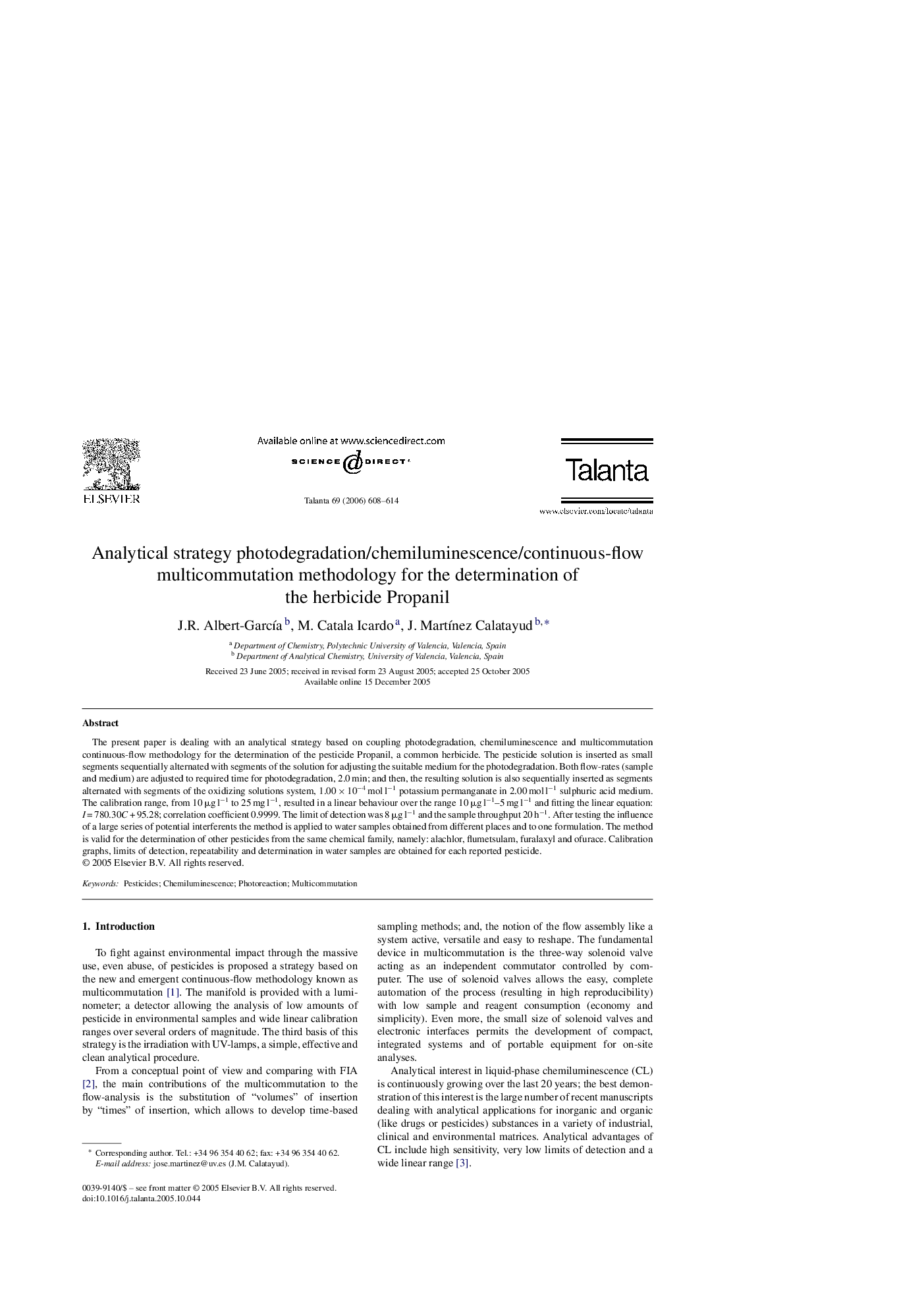| Article ID | Journal | Published Year | Pages | File Type |
|---|---|---|---|---|
| 1247288 | Talanta | 2006 | 7 Pages |
Abstract
The present paper is dealing with an analytical strategy based on coupling photodegradation, chemiluminescence and multicommutation continuous-flow methodology for the determination of the pesticide Propanil, a common herbicide. The pesticide solution is inserted as small segments sequentially alternated with segments of the solution for adjusting the suitable medium for the photodegradation. Both flow-rates (sample and medium) are adjusted to required time for photodegradation, 2.0 min; and then, the resulting solution is also sequentially inserted as segments alternated with segments of the oxidizing solutions system, 1.00 Ã 10â4 mol lâ1 potassium permanganate in 2.00 mol lâ1 sulphuric acid medium. The calibration range, from 10 μg lâ1 to 25 mg lâ1, resulted in a linear behaviour over the range 10 μg lâ1-5 mg lâ1 and fitting the linear equation: I = 780.30C + 95.28; correlation coefficient 0.9999. The limit of detection was 8 μg lâ1 and the sample throughput 20 hâ1. After testing the influence of a large series of potential interferents the method is applied to water samples obtained from different places and to one formulation. The method is valid for the determination of other pesticides from the same chemical family, namely: alachlor, flumetsulam, furalaxyl and ofurace. Calibration graphs, limits of detection, repeatability and determination in water samples are obtained for each reported pesticide.
Related Topics
Physical Sciences and Engineering
Chemistry
Analytical Chemistry
Authors
J.R. Albert-GarcÃa, M. Catala Icardo, J. MartÃnez Calatayud,
